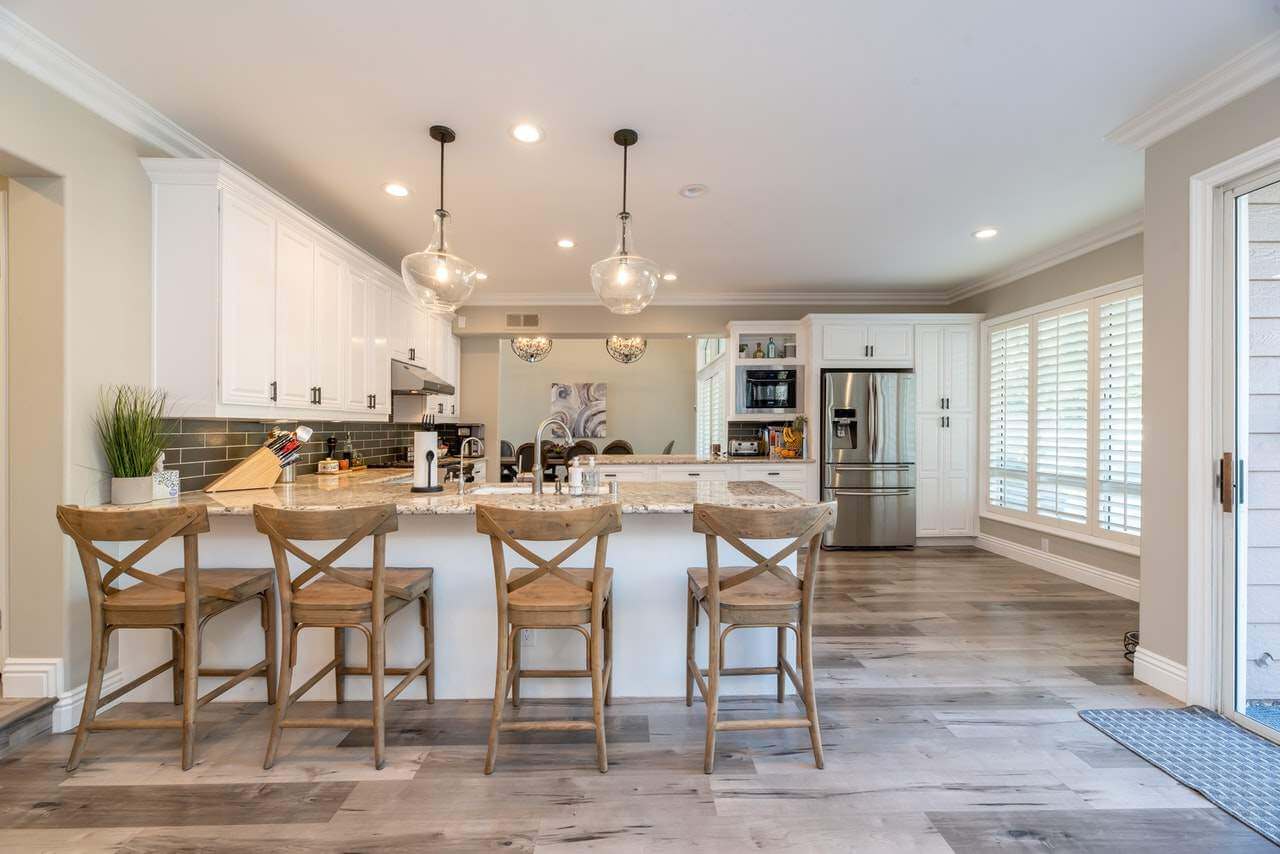The Keys to Hanging Pendant Lamps

Home lighting is of vital importance to transmit the ambiance you want. It’ll be useless if you’ve chosen the perfect furniture, textiles, and decorative objects that you like the most if you can’t then make each space a comfortable place. Of all the different ways of lighting your home, this time you’re going to discover everything about pendant lamps.
This is one of the elements that you must take into account and, for this, it’s important that you consider the model of each lamp, the height at which you place it, the size, intensity and color of the light.
The importance of pendant lamps in decor

One of the key elements of decor in recent seasons has been precisely the use of pendant lamps. Its shapes have become objects of desire in themselves, ranging from complicated avant-garde designs to simple light bulbs that excite even the most unconventional bohemians.
If you want to install pendant lamps in your home, discover the keys to use them to your advantage and achieve spaces full of intention, purpose, and warmth. Because a pendant lamp can do more for you than simply provide light.
Size does matter
When it comes to hanging pendant lamps, size matters–not only the size of the pendant but also the size of your room and your furniture. Only by taking into account all the factors, will you achieve the right look and a well-lit space.
While spacious rooms with high ceilings cry out for objects that are equally large and colorful, small spaces need pendant lamps that are light, subtle and with a rather minimalist design.
If you have a large room with low ceilings, we recommend combining several small and medium-sized pendant lamps. This is a way of adding luminosity without visually saturating the atmosphere and, as if that wasn’t enough, it’s one of the trends for this year.
The type of light that pendant lamps create
Previously, we’ve addressed the subject of lighting, the different types of light that exist and how you can use them to decorate your home. Here, you can find a quick reminder:
- General light: one with which you illuminate an entire room. It must be clear that its main function is to make sure everything looks good. If you’re talking about pendant lamps, this is one of its main functions.
- Ambient light: this generates a specific atmosphere and it’s achieved with points of light distributed throughout the room.
- Point light: this type of light helps you illuminate something in particular, for example, your favorite armchair while you read.
- Decorative light: more than just illuminating a space, this decorates and can be used in the form of garlands or lights in order to give that spatial touch to corners.
How high should you hang pendant lamps?

A basic tip is don’t hang them too high! This is one of the most common lighting mistakes and one of the ones that detract from the style of your home. Therefore, if you’re going to hang it above the dining table, consider that you should leave between 150 and 160 cm between the table and the bottom of the lamp.
If you decide to hang several pendant lamps in the corner of your room, do it at different heights and leave the lowest one just below the eye line.
Where else can you hang them?
It’s almost essential to hang at least one pendant lamp in the dining room or home office. This gives a lot of harmony to your home and good lighting is key to eating or working comfortably.
Another point where they work well is on both sides of your bed, above the nightstand. By doing this, you can replace your table lamps and give your bedroom a more modern look.
However, avoid using them in transit areas. Unless you live in a large mansion, areas of transit are usually tight areas that you should try to visually enlarge. With pendant lamps, you’d get the opposite effect and it can make it quite claustrophobic.
Hanging pendant lamps offer many possibilities and are essential to decorate and illuminate your home. There are so many models and shapes that it’ll be difficult for you to decide which ones to choose!
Take into account the measurements, height and shape of each space to obtain the desired results. We’d love to hear how you’ve put these keys into practice!
Home lighting is of vital importance to transmit the ambiance you want. It’ll be useless if you’ve chosen the perfect furniture, textiles, and decorative objects that you like the most if you can’t then make each space a comfortable place. Of all the different ways of lighting your home, this time you’re going to discover everything about pendant lamps.
This is one of the elements that you must take into account and, for this, it’s important that you consider the model of each lamp, the height at which you place it, the size, intensity and color of the light.
The importance of pendant lamps in decor

One of the key elements of decor in recent seasons has been precisely the use of pendant lamps. Its shapes have become objects of desire in themselves, ranging from complicated avant-garde designs to simple light bulbs that excite even the most unconventional bohemians.
If you want to install pendant lamps in your home, discover the keys to use them to your advantage and achieve spaces full of intention, purpose, and warmth. Because a pendant lamp can do more for you than simply provide light.
Size does matter
When it comes to hanging pendant lamps, size matters–not only the size of the pendant but also the size of your room and your furniture. Only by taking into account all the factors, will you achieve the right look and a well-lit space.
While spacious rooms with high ceilings cry out for objects that are equally large and colorful, small spaces need pendant lamps that are light, subtle and with a rather minimalist design.
If you have a large room with low ceilings, we recommend combining several small and medium-sized pendant lamps. This is a way of adding luminosity without visually saturating the atmosphere and, as if that wasn’t enough, it’s one of the trends for this year.
The type of light that pendant lamps create
Previously, we’ve addressed the subject of lighting, the different types of light that exist and how you can use them to decorate your home. Here, you can find a quick reminder:
- General light: one with which you illuminate an entire room. It must be clear that its main function is to make sure everything looks good. If you’re talking about pendant lamps, this is one of its main functions.
- Ambient light: this generates a specific atmosphere and it’s achieved with points of light distributed throughout the room.
- Point light: this type of light helps you illuminate something in particular, for example, your favorite armchair while you read.
- Decorative light: more than just illuminating a space, this decorates and can be used in the form of garlands or lights in order to give that spatial touch to corners.
How high should you hang pendant lamps?

A basic tip is don’t hang them too high! This is one of the most common lighting mistakes and one of the ones that detract from the style of your home. Therefore, if you’re going to hang it above the dining table, consider that you should leave between 150 and 160 cm between the table and the bottom of the lamp.
If you decide to hang several pendant lamps in the corner of your room, do it at different heights and leave the lowest one just below the eye line.
Where else can you hang them?
It’s almost essential to hang at least one pendant lamp in the dining room or home office. This gives a lot of harmony to your home and good lighting is key to eating or working comfortably.
Another point where they work well is on both sides of your bed, above the nightstand. By doing this, you can replace your table lamps and give your bedroom a more modern look.
However, avoid using them in transit areas. Unless you live in a large mansion, areas of transit are usually tight areas that you should try to visually enlarge. With pendant lamps, you’d get the opposite effect and it can make it quite claustrophobic.
Hanging pendant lamps offer many possibilities and are essential to decorate and illuminate your home. There are so many models and shapes that it’ll be difficult for you to decide which ones to choose!
Take into account the measurements, height and shape of each space to obtain the desired results. We’d love to hear how you’ve put these keys into practice!







